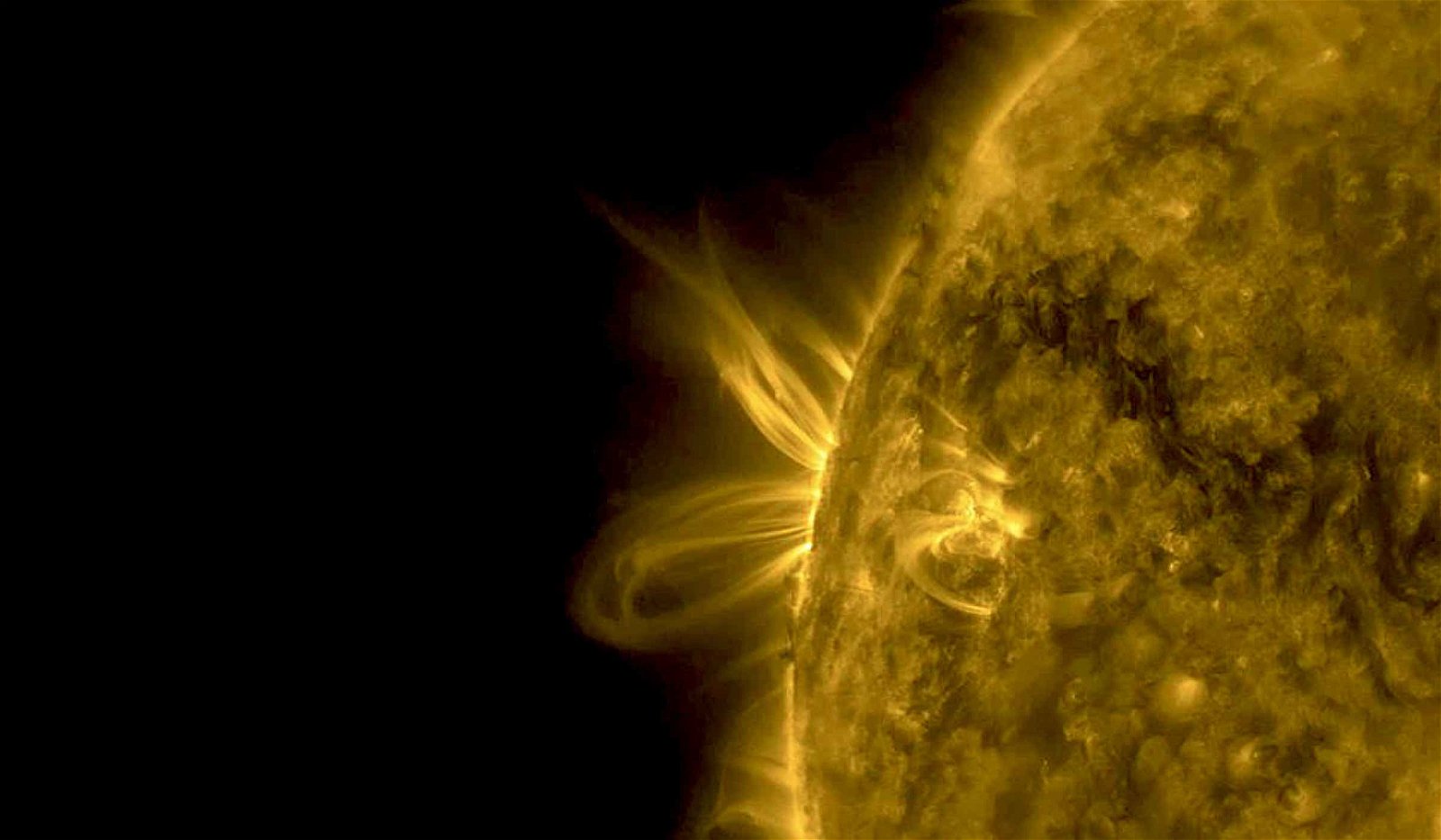A seldom-seen midnight celestial event reportedly occurred in recent weeks, marking what may be just the second time the rare solar phenomena has been observed in more than a decade.
Late in February, a previously active sunspot region, AR3234, which at the time was facing Earth, began the release of what NASA characterized as “fifteen moderately intense M-class flares and one powerful X-class flare.”
On February 23, one of the M-class flares emanating from AR3234 occurred close to midnight EST. Although such late-night occurrences usually go unnoticed, Dave Typinski, a radio astronomer based in High Springs, Florida, noticed the detection of a strong shortwave radio burst coinciding with the event.
While Typinski’s work at the AJ4CO Observatory mainly concerns radio astronomy in the 16 to 32 MHz region of the spectrum with a particular emphasis on emissions from Jupiter and the Sun, as well as the remnants of supernovas and active galactic nuclei, they occasionally pick up terrestrial sources that include radio stations, lightning strikes, and “interference emitted by faulty power lines and poorly designed electronic devices.”
However, on February 23, something entirely different was detected as a double wave of static washed out the entire radio spectrum, covering all frequencies below 25 MHz. Curiously, Typinski noticed that the Sun was approximately 69 degrees below the horizon at the time, meaning that his antennas should have been shielded from any emissions coming from the Sun by the body of the Earth itself.
Obviously, this wasn’t the case with this midnight celestial event.
“It’s called ‘antipodal focusing’, explains longtime space weather expert Dr. Tony Phillips, who chronicles events like these at spaceweather.com. Antipodal focusing involves radio propagation that occurs when a signal travels from one side of the planet and gets stuck between Earth and the ionosphere, causing it to travel to the opposite hemisphere.
The phenomenon, which has been the subject of past confidential summaries by U.S. intelligence agencies, was first proposed by Guglielmo Marconi more than a century ago, and although rare, it can sometimes allow instances where solar emissions converge at the direct opposite location from where they first encountered the Earth’s atmosphere.
Sometimes, the resulting signal can also be exceptionally strong.
Typinski told Phillips that the instance his observatory detected in February not only represented just the second or third midnight solar radio burst he had detected in the last decade, but also the strongest he has seen.
“The previous events happened at the height of Solar Cycle 24,” Typinski said.
Interestingly, the method of detection Typinski used has its roots in the Cold War era, when signals intelligence (SIGINT) ships positioned in the south Pacific ocean would employ a similar mode of propagation to collect intelligence from radio sources produced by the Soviet Union.
Today, although it still likely is used for intelligence-gathering purposes, radio astronomers like Typinski employ it with remarkable results to detect rare solar phenomena the likes of which occurred in late February. More information on solar events like these can be found at Typinski’s website, and courtesy of Dr. Tony Phillips atspaceweather.com.

